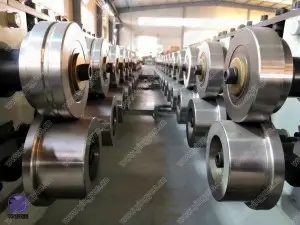
Understanding Hydraulic Bending Machines Efficiency and Precision in Metal Fabrication
In the world of metal fabrication, the efficiency, and precision of bending processes are of paramount importance. Hydraulic bending machines, or hydraulic press brakes, have emerged as essential tools that combine powerful mechanics with advanced technology to produce high-quality bends in various materials. This article delves into the functionality, benefits, and applications of hydraulic bending machines, shedding light on why they are integral to modern industrial operations.
What is a Hydraulic Bending Machine?
A hydraulic bending machine is a device that uses hydraulic force to bend metal sheets into desired angles and shapes. These machines consist of a frame, a ram, a die, and a hydraulic cylinder. When hydraulic pressure is applied, the ram moves downward, pressing the metal sheet against the die to create a bend. This process is widely used due to its ability to generate high levels of force, allowing for precise bending of thick and hard materials that other machines may struggle to handle.
Advantages of Hydraulic Bending Machines
One of the primary advantages of hydraulic bending machines is their ability to deliver consistent and uniform results. The hydraulic system allows for smooth operation and minimizes the risks of mechanical failure, resulting in higher productivity. Additionally, hydraulic machines typically feature adjustable parameters, enabling operators to modify pressure and speed according to the specific needs of each project.
Another significant benefit is versatility. Hydraulic bending machines can accommodate a variety of materials, including aluminum, steel, and other alloys. They are equipped to handle several sheet thicknesses, making them suitable for different applications across industries such as automotive, aerospace, and construction.

Moreover, hydraulic bending machines are designed with safety in mind. Many modern models include features such as automatic shut-off systems, safety guards, and emergency stop buttons, ensuring safe operation and reducing the risk of accidents in the workplace.
Applications of Hydraulic Bending Machines
The applications of hydraulic bending machines are vast. In the automotive industry, they are used to create parts such as chassis components, brackets, and shell structures. The aerospace sector employs these machines for producing frames and structural elements, where precision is critical due to the stringent safety requirements.
In construction, hydraulic bending machines facilitate the fabrication of metal frames and reinforcements, enabling builders to achieve designs that are both functional and aesthetically pleasing. Additionally, these machines are often used by metalworking shops for custom projects, allowing for creativity in design and structure.
Conclusion
In conclusion, hydraulic bending machines play a vital role in the metal fabrication landscape. Their efficiency, precision, and versatility make them indispensable for various industries that require high-quality bending processes. By converting hydraulic pressure into mechanical force, these machines ensure consistent results while enhancing safety for operators. As technology continues to evolve, we can expect further advancements in hydraulic bending machines, leading to even greater efficiencies and capabilities in the metalworking arena. Whether for large-scale manufacturing or small custom projects, hydraulic bending machines remain a cornerstone in the pursuit of excellence in metal fabrication.